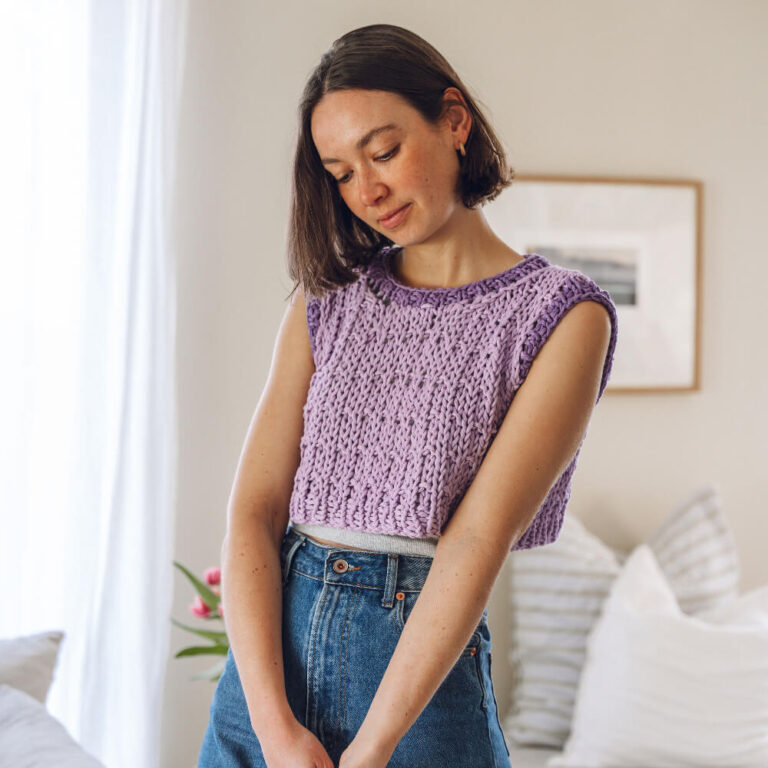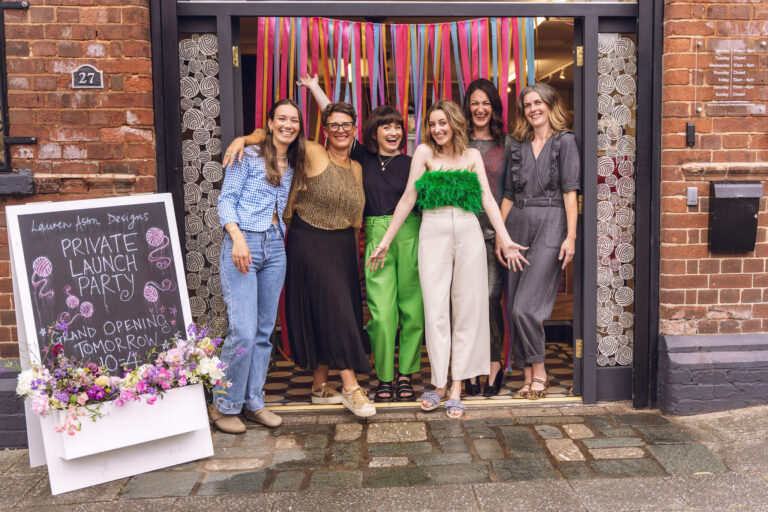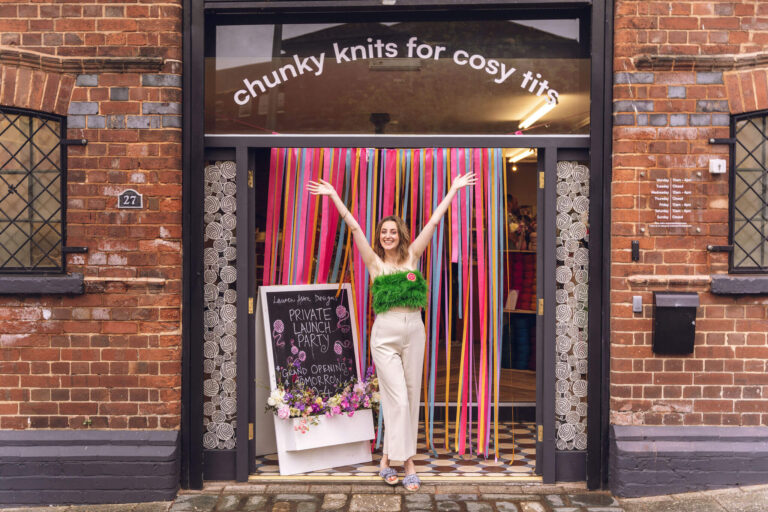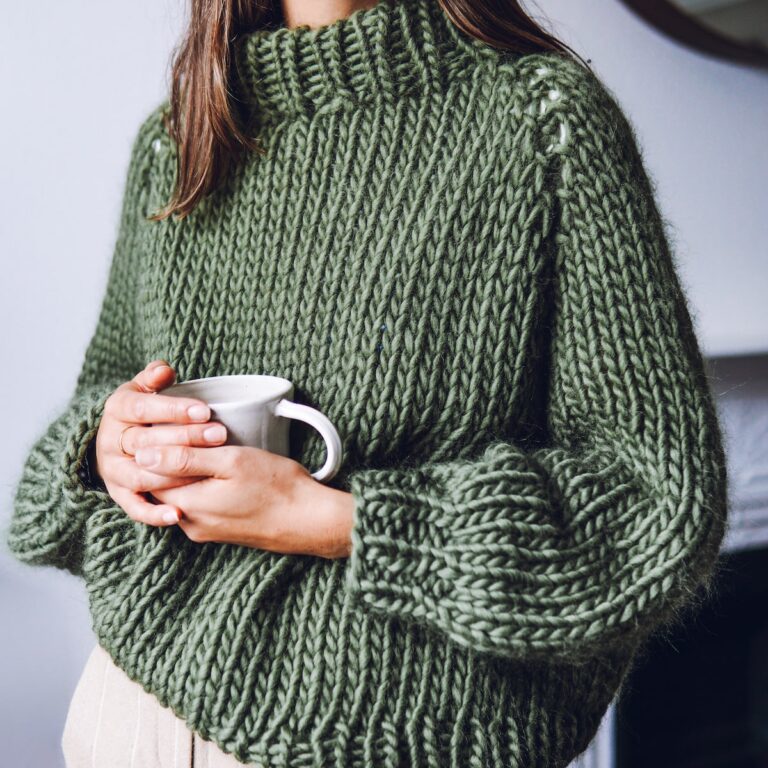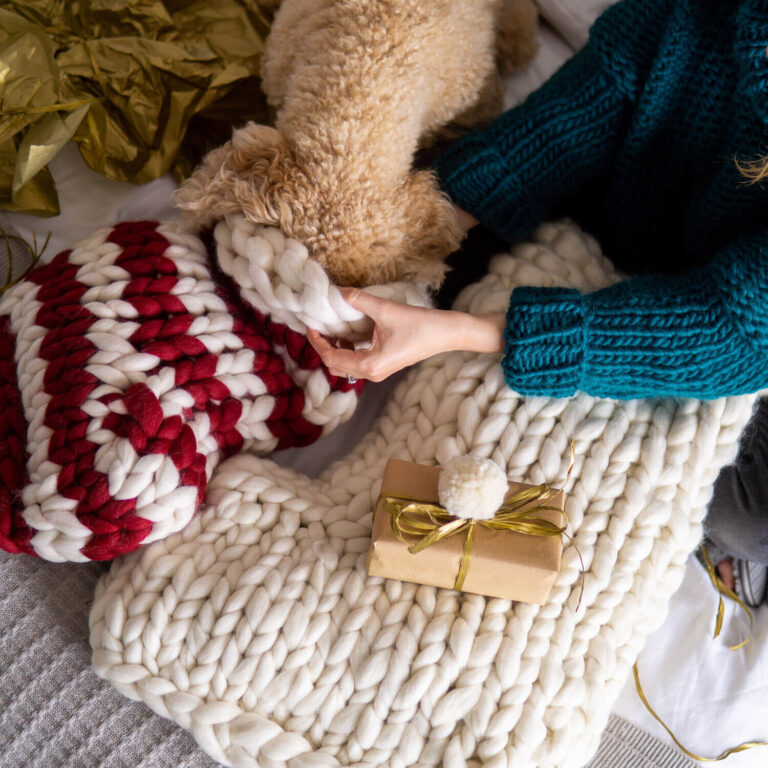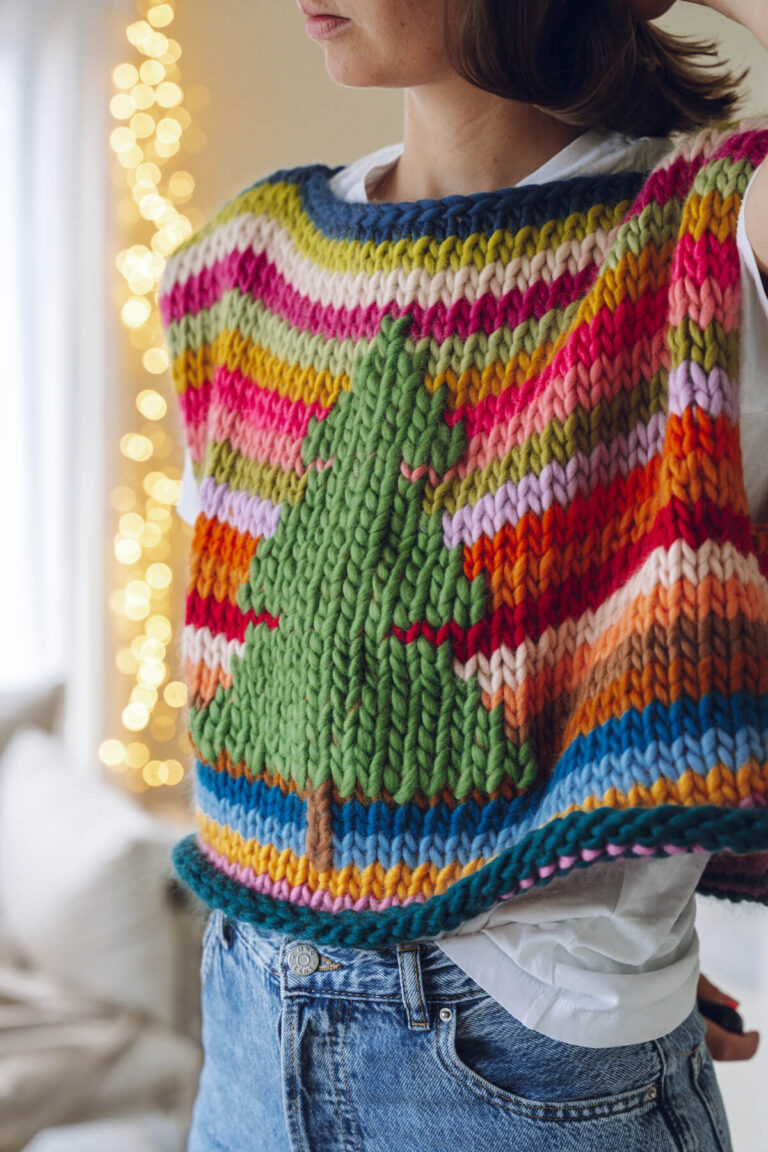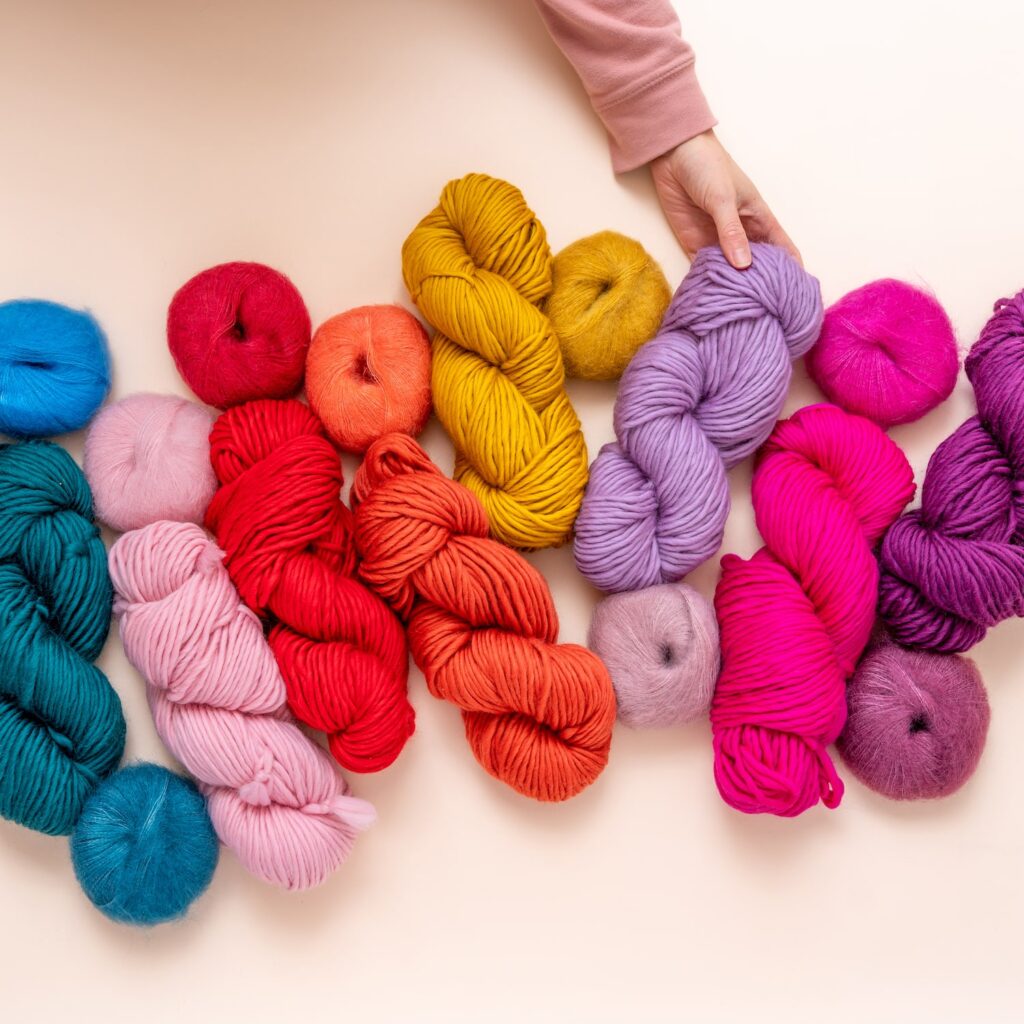Hello Team
One of the questions I get asked most frequently is for some form of advice on running a small business. There’s no doubt that it’s hard work and very confusing at times, especially when you’re starting out – It’s a true test of your character and dedication and there seem to be endless question marks, is this the right branding? how do you market yourself? What’s for dinner? – to mention a few. I’m really honoured that people feel they can turn to me to ask some of those questions. I certainly don’t have all the answers (Dinner being my personal FAQ each and every day) but we are all constantly experiencing and learning new things so at some point a few bit’s of knowledge are bound to stick…surely?! So if just one of the lessons I’ve learnt could help someone else then that would be marvellous.
When in doubt, put it to Instagram
Last night I asked the world (via Instagram stories) if they had any small business questions and hoooooly did they ever! I’ve narrowed down the most frequent questions here and will try to catch up with the rest on another blog post (or 5) as soon as possible. F.Y.I. The main questions I was asked and will aim to cover in future posts are How I started and grew my business. I’ve touched on them here but will go into more depth soon.
Disclaimer:
I’m going to precede the waffle by letting you in on the most important part first: None of us actually know what we are doing. You are not alone in feeling like you’re making it up as you go along. That is completely normal and totally OK. There often isn’t a clear cut, right and wrong way to do something and some things, annoyingly, are just figured out over time and experience. Basically, I do not know the best way for you to do ANYTHING (but stick with me a minute!…) All I know are the things that have and haven’t worked for me. But I also remember how helpful I found it to hear about other peoples experiences, methods and processes… bearing all of that in mind – Feel free to ignore me completely and follow your own path, otherwise I hope you find something in here that’s helpful!
Let’s Q&A
I’ve put the questions in bold so hopefully it’ll be easy for you to skim through and find relevant parts as there is A LOT of chat here….
Do you have any advice on Starting Up?
– I received this questions so many times and there’s so much to say that I think it’s best to do an entire blog post on it soon with lots more info but for now I think my key points would be:
- Find your USP (unique selling point): I know it’s boring but you absolutely need something that sets you apart. If you want to sell pens, what is special about you and your pens that’s different to the next persons pens? Once you’ve found it – run with it.
- Remember it’s (a bit) pretend: Don’t start a business just because somebody else makes it look like fun. Like a lot of things, it’s hard bloody work and shouldn’t be a throw away decision. Let’s also not forget that everything you see on social media is rose tinted.
- Be a sponge: This is the one the helped me the most when I started. I tried to absorb absolutly everything I could. Read blogs, do webinars, go to networking events, apply for relevant competitions and talk to as many people as you can online and offline. There are no limits to what you can learn when you try to absorb it all.
Is it important to have my own website?
Yes. It’s wonderful to be affiliated with websites like Notonthehighstreet and Etsy but it’s also really important to have your own space on the internet that you control entirely and don’t need to pay any commission on. It’s also advisable – as in life – to not keep all your eggs in one basket. My constant goal is to never have my business entirely dependent on one other business. That goes for sales platforms, suppliers, customers, marketing etc.
With regards to website platforms, I use Squarespace which I highly recommend. I find the website really easy to build and use and their help guides and customer service are both brilliant. You can get a free trial and try out different templates to see which works for you then you basically fill in the images and text, it’s so easy to use even I can do it! For an alternative I’ve also heard wonderful things about Shopify but haven’t used it myself.
How many hours do you put in?
It depends on the time of year. Between October – January I basically put in every waking hour. Our house is a mess and my friendships are hanging by a thread. The rest of the year has its ups and downs. Summer is my quietest time so it’s when we tend to see people and go out as much as possible as I can afford evenings off. I still work 6 or 7 days a week in general though as there’s always something to do, even if I’m on top of the orders there’s lots of prep for Christmas to be done, blogs to be written, emails to send, products to develop, photos to take…. as I mentioned above – It is hard work which is why you need to love it.
How did you make it a full time job?
I’ve never been someone to do things by halves so for me personally – I saved up some money, set myself a deadline (aka when the money would run out) my plan being that I’d be full time until that point and if it wasn’t working by then, I’d quit completely. I think it’s fair to say that the more you put into things the more you get out. For me, the key seemed to be pulling it all together – sales platforms, social media, marketing, products. Watching how they work together and having the time to invest into that.
It’s rarely going to be an instant success the moment you launch and that’s really a good thing – I certainly couldn’t have coped if it had gone any faster. I needed time for it to go slow while I was learning, it’s a chance to watch it happen and discover what works and what doesn’t then you can build on that – fix the problems and keep pushing the positives. It’ll be different for everyone in every business and I don’t believe it makes anyone more or less of a success, certainly at the beginning. Do what suits you, in your own time – set your own goals that work for your personal situation and give it all you’ve got.
How do you stay motivated?
This question cropped up a lot and I totally get it – I know when you work from home it can be very tempting to pop the kettle on and hit the sofa hard. I certainly have days where I just don’t want to ‘go to work’ because the idea of sofa surfing seems too appealing. The main 2 ways I deal with it are – Having a dedicated space for work and everyones favourite… To-Do Lists! (when is the answer ever not ‘a to-do list’?)
I’m lucky enough to have a few rooms in our home just for my work, when I walk in the studio it’s time to crack on. I try to come in here first thing every morning before the allure of the sofa entices me. Once I’m here I can’t resist doing something …there’s always something to be done isn’t there? By doing that I’m not noticing the terrible state of the carpet or overflowing wash basket, I’m just ‘at work’.
The other thing I LOVE is a to-do list because it helps organise everything. My favourite system at the moment is to have 3 lists – ‘Priority’, ‘Important’ and ‘Can Wait’ I write absolutely everything on there then tackle them in that order. A huge element of both these things is organisation. It’s easy to ignore the washing because I know that I’ve blocked out Sunday morning to do the housework so I can deal with that then, and now I can crack on with knitting.
Some previous blog posts that might be useful –
- The Quiet Times (has a list of suggestions that might help get you going)
- How To Stay Motivated (More in depth analysis of my thoughts on the matter)
- Planning for your creative business (last weeks blog, I really think a year round plan is best to help you keep on track)
How do you come up with ideas?
Last week I discussed product development as part of my planning blog, essentially – I like to spend whole days working on it and try not to look at direct competition as I find it really restricting and distracting.
How do you calculate prices?
I will discuss this in more depth in my future posts but wanted to just mention it here as it is a biggie. The key is to not forget that you are trying to earn a living. It’s very easy to undervalue ourselves and think ‘it’s only an XYZ made by silly me’ but do try to avoid that mistake. Undervaluing your time and skills is just as bad as overpricing yourself….after all, as a customer, wouldn’t you be suspicious if something was oddly cheap?
The way I calculate my prices is with the mother of all spreadsheets. Firstly you need to calculate all of your costs – this includes the obvious things like the materials and your time (not charged at slave labour prices) to the more subtle things like the stickers you put on the box, the tissue paper you use to wrap it with. You might need to consider VAT, commission fees on certain websites (NOTHS for instance is 25%+ VAT and increases for any products featured in the Christmas Catalogue so make sure you’re earning more than 1p once that’s come off.) Then let’s not beat around the bush – you’re running a business, you need to cover costs like electricity, pencils, machinery and you also need to make a profit so you can pay the bills, otherwise what’s the point?
Once you come to a price, I think it’s normal to ask ‘will people pay that?’ This is the only time I’d recommend having a look around at similar products and importantly, products of a similar quality and see if they’re in the ball park. There’s no point me comparing the price of my blanket to an acrylic giant knit blanket because the Merino Wool I use is a premium yarn so will always be a lot more expensive. Personally I have no time for pricing games either – I’m not going to undercut a competitor by £2 to try and ‘steal the sale’ but instead I’ll figure out what I want to earn per piece and if that’s in a similar ballpark then it’s a promising start.
I wrote a mildly aggressive blog post back in 2015 (!) about pricing, some things have changed since then (I have now released the knit kits for example) but generally I think most points still stand.
How does my customer find me?
In my experience one of the biggest mistakes start ups make is the assumption that once they have a website, people will find them and will buy things from it. That is not the case. The internet is bloody HUGE. How can we expect all of our customers to just stumble across us and part with their hard earned cash? We need to help them find us. This could be by paying for advertisements, by social media, or any other form of marketing. The key is to always ensure that wherever you’re focusing your attention, you’re connecting with your target market.
So the first step is to nail who your customer is to help you determine your target market, then you can figure out what publications/websites/places they read/use/visit and work on those. You could spend £50 on a small advert at the back of a national magazine where lots of different people might see it or you could spend that on a Facebook ad and really specify who you’re targeting so that your customer sees it.
Essentially – ALWAYS keep your customer in mind, Where will they be? What will they be looking at? and what will they want to see? How will they want to see it? You need to know your customer to find them.
How do you gain exposure with a small budget?
In my experience the ‘trick’ to gaining wider exposure is often by creating great content that people want to share. If you create a brilliant product and take a wonderful photo of it people will want to share it, they’ll want to introduce it to their friends, influencers might choose to share it and magazines might ask to run it. Once you’ve got the great content, it leads us to another two points – Press Releases and Influencers.
Creating a good press release is such a useful tool. Once you have a new range out write a press release about it and send it to any publications that might find it interesting. Magazines that specialise in your field, local newspapers/magazines that would be interested in local businesses etc. It’s a great way to be featured for free, all you have to do is collate the information. I used to do mine myself but wasn’t very good at ‘bigging myself up’ so now I have the help of a lovely lady called Eleanor Yeo who’s a PR genius. (If you’d like to talk to Els about any PR let me know and I can pass on her details – her fee is a worthy price to pay for all the exposure it could bring you)
Asking Influencers to share your products can be a brilliant way of gaining exposure but again, make sure they’re a good fit for your business and that their followers are your customers!! If they don’t overlap then there is absolutely no point for either of you. If an influencer has lots of followers but runs a fashion account and you sell homewares then just because their numbers are high doesn’t necessarily mean you’ll gain anything. I’m sure your homewares are lovely but…they’re there for the shoes. It won’t do either of you any favours.
It’s also best to come to a clear arrangement, If you find someone you want to collaborate with them, send them a polite message saying how much you love their feed (please GOD get their name right and personalise it – I can’t tell you how many ‘Dear Laura, I love your (generic) products’… do you though? or are you just sending out 100 copy and paste emails in the hopes of getting fee stuff?) and ask if you could send them XYZ in exchange for ABC (be it a photo on their grid, a story etc…and don’t underestimate the power of IG stories!)
How do you connect with the right people on Social Media?
It’s simple really…Interact – comment, like, share and chat… and really importantly, remember that we’re all just people. How would you speak to someone in the street? You wouldn’t walk up to a stranger and say ‘Where did you get that?’ you’d say ‘hello, I really like your scarf, do you mind me asking where you bought it?’ … y’know, normal. (I know it seems obvious to you lovely people but it really happens a lot!) Social media platforms and Instagram in particular are after authentic, human interaction it’s called ‘social’ for a reason. Socialise and meet people. Play nicely and you’ll meet some lovely humans, I promise.
Any tips on how to force myself to do Instagram stories?
Yes! Just do it! I know it’s really hard at first. I was SO nervous that people would hate me and unfollow. I was certain that there would be a mass return of products because people saw who I actually was and I’d be a let down and they’d decide they hated everything about me… but actually, people really aren’t that bothered, they just want to see you enjoying what you do and learn who you are. If you’re really nervous then you could start with some hyper lapses of you making/working/packing orders, or some videos where you show your work and talk in the background before you get to the mug shots but it really is helpful for your account, it’s really worth doing them and I promise – it gets much easier and actually fun as you get more into it. The response rate is generally high so it’s lovely to feel like your talking directly to people. Go for it and be yourself.
I heard Dee Campling saying on her instagram live the other night that she felt nervous about her ‘real life friends’ seeing it and judging her and I 100% related, I’m sure we all feel like that – I certainly did when I started. I still feel a bit weird if I see my BFF’s have watched mine…but you know, as long as you are yourself on the stories then you have nothing to worry about – plus if they’re judgemental they aren’t good friends so sod em!
In fact I’m going to set you a challenge – If you’re here for advice on Stories I challenge you to do a talking story this week and tag me in it so I can see and check you’ve done it :p Then you also know you have one friend watching who 100% supports you having a chat! You’ve totally got this.
Do you have advice on Stock vs Made to order for a handmade business?
Stock really depends on your resources. If you have the money to invest in products that you KNOW will sell at some point, and the space to store it, then I’m all for stock. We spend the summer building as much stock as possible for winter with items like the Santa Hats and the pink and mustard cushions. However with the blankets – I offer over 450 combinations what with colour, stitch and size options. There’s no way I could store all the yarn for that let alone all the variations, so I generally make blankets to order and stretch my lead times. I work around it as best I can by trying to keep popular colours in stock to reduce the wait and I sometimes make small amounts of stock of blankets that I know to be popular.
The advantage of having stock is that we as consumers are used to ordering something online and it arriving the very next day. We aren’t used to waiting anymore so we’re more likely to order if we can have it straight away. Therefore it does help to generate orders. Of course it’s not totally black and white and certainly doesn’t mean that if you make things to order you’ll never sell anything it just helps encourage sales when it’s a speedy process.
How do you deal with returns?
It’s important to have clear T&C’s on your website that abide by the law and also clearly state both yours and the customers rights. For instance legally a customer is entitled to return a product they’ve purchased online as long as they tell you within 14 days (even if it’s for no other reason than ‘change of mind’). However this doesn’t apply to everything – personalised and custom-made items for instance are non-refundable. It’s always best to be up on the rules for online selling and the .gov website has heaps of info and is very easy to use. Websites like Etsy and NOTHS also have the basics saved on every storefront.
Once you’ve got the legal bits down, the question is then what type of business do you want to be? If someone informs you after 16 days that actually they don’t want it, are you going to stick to your T&C’s or allow it? – and as long as your 14 day policy has been clearly stated then that is entirely up to you and how you wish to run your business *no judgement here*
Personally, I always try to put myself in the customers position, (also, I’m awful at sending ASOS orders back quickly so I do appreciate a bit of leeway.) If it’s something I can resell and the customer has been polite about it’s often totally fine by me. If it’s been well over 14 days or if they’re rude about it then I’m more likely to question it. (Probably not the most professional advice but hey, we’re all human, and I’m a slightly grumpy only child!) I don’t really like being a stickler unless I feel someones taking the p*ss but the question I try to ask myself is ‘if that was me, how would I feel?’.
The other thing I consider is that if they’ve been a customer once but somethings changed in their situation and they’ve had to return their footstool, if I’m a dick about it they aren’t likely to come back are they? Whereas if I’m pleasant and understanding they might stick around and possibly think of me again which is always lovely. Also – making other people happy is a really good feeling, much nicer than conflict so although it’s always painful (we want everyone to love everything we make all the time and it’s a bit hear breaking when they want to give it back) It’s often much nicer to just get on with it and be good about it. (unless they take the p*ss, then i’m all for standing up for yourself – in which case I recommend being professional and polite but firm.)
Annnnd breath…
Holy crap that was long winded! And I made the executive decision to not break it up with pictures because I thought it might be confusing! I do apologise! I’ll go picture heavy for a few weeks to compensate!
The last few bits I wanted to add are that, it can feel daunting (especially after reading essays on my blog!) but you’re not alone. There’s lots of people who can help answer questions. I could not have got by without asking endless questions and irritating my friends beyond believe (Rachael from Grace and Favour Home was basically on my speed dial for the first year of my business) and I know I bang on about her all the time but I can’t tell you how much of a help Helen from The Creative Business Network is. She does mentoring, workshops and hosts wonderful events if your based in Devon they are a brilliant way of meeting like minded people and talking about ALLL this stuff. In fact theres a meet up tomorrow I’m hoping to pop to.
Right I’m out of here
I’m sure I’ve been writing this blog for a month. I must go and eat something other than biscuits. I REALLY hope there was some useful information in there. If you have any other questions drop them in the comments section below and I’ll either reply ASAP or do a blog on them (since that’s how I roll) And don’t forget to tag me in your Instagram stories so I can watch you!
Take care friends
L x
